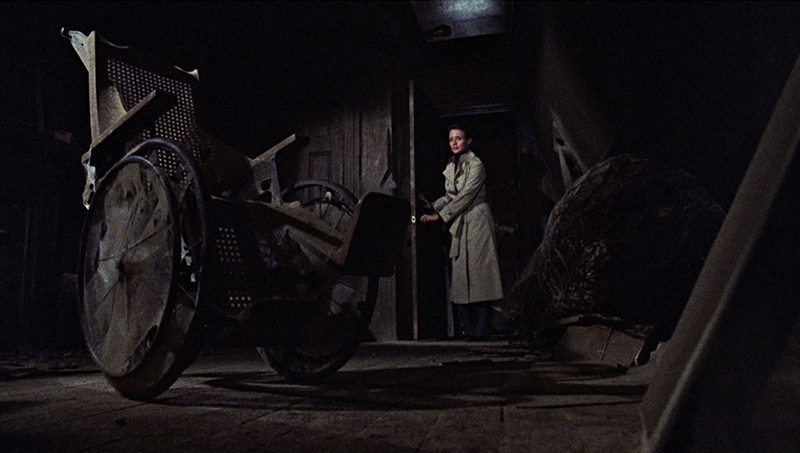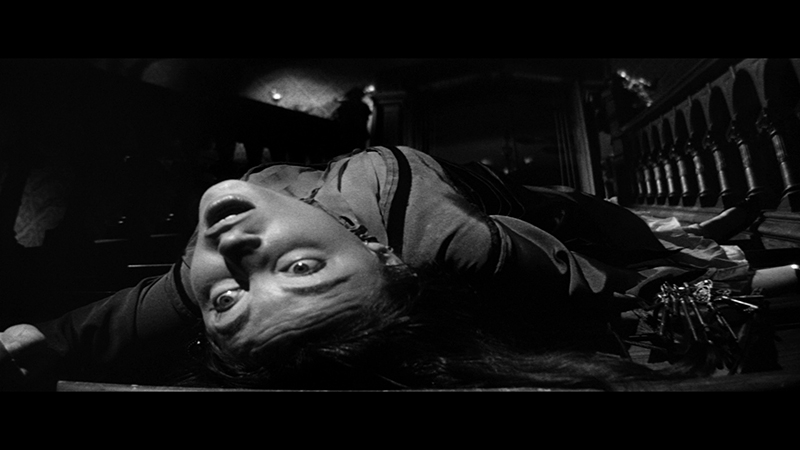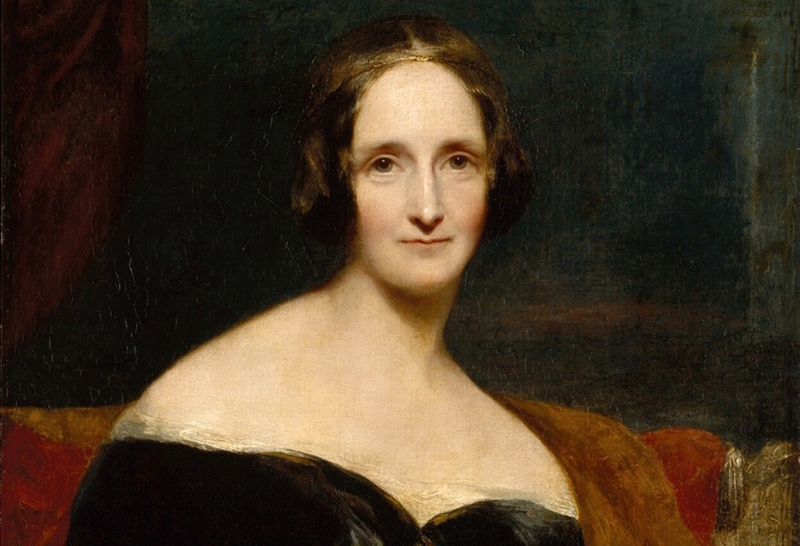Buildings and building fear coexist within Gothic Horror. Captured within the walls, ghosts become recordings of a painful past. There is a recurring "haunted" theme here; imagery lost within the minds of those who clawed onto a medieval romance in order to understand their present grief. A "paradise lost." From poetry to novels, penny dreadfuls to cinema, these tales have continued to inspire, often revitalized for modern audiences. Shelley, Poe, du Maurier, King, et al. had and still have a pendulum to swing. Their sharpened narratives cut to the bone and manage to capture (and [re]define) the Gothic spirit.

Architecture (buildings) Europe (12th-16th century). The "Gothic Revival," in particular, was an architectural movement that began in England during the 1740s, heavily influencing the art and literature of the period. Often referred to as "Medievalism" (or the "Medieval Revival), the aesthetic is deeply rooted in naturalism and eccentricity. This can be seen in the overly decorative eccentricities of gargoyles, hidden rooms, and spiral staircases.

Black Sunday (film) Italy: La maschera del demonio (1960). Mario Bava's black and white slice of iron maiden madness is a landmark in Gothic Horror. Known for lush cinematography, not only was it Bava's debut as a director but also cemented actress Barbara Steele as "Britain's first lady of horror."

The Changeling (film) US (1980). Peter Medak's film is often overshadowed by other onscreen hauntings. Released several months before The Shining, aside from a tragic and snow-laden opener, they are quite different as Medak leans much more heavily towards Gothic sensibilities (and sensitivities) with his distinct atmosphere and use of sound. This is not only a terrifying and disturbing ghost story (based on true events) but also an excellent example on the exploration of grief and trauma within the subgenre.

Dracula (character) UK (1897). Bram Stoker's vampire comes with some reservations (see Xenophobia) about what he represented during his first appearance towards the end of the 19th century. But there is no doubting Dracula's potency and everlasting impact on the horror genre; a myriad of interpretations, from F.W. Murnau's own controversial classic to the legacy of Lugosi and Lee's iconic performances, right up to Netflix's superb anime series Castlevania (2017-2021).

Eyes Without a Face (film) France: Les Yeux sans visage (1960). An incredible example of French horror, not only steeped in the Gothic but an early example of "French Extremity." Based on Jean Redon's novel of the same name and released the same year as Hitchcock's Psycho, this is an important film in defining modern horror. Director Georges Franju's background as a documentarian comes through in the film's intricate (medical) details.

Frankenstein; or, The Modern Prometheus (novel) UK (1818). The story of Victor Frankenstein and his "monster" is the perfect melding of Gothic Horror and science fiction. It is remarkable to think that Mary Shelley was just 19 years old when she finished writing the first edition, tapping into the newfound powers of scientific experimentation and the morality of man playing God.

Ghost Story (film) US (1981). Sandwiched between The Changeling and Poltergeist, this is another overlooked little horror movie. Adapted from Peter Straub's 1979 novel, tonally, it is closer to Medak's film than Hooper and Spielberg's. A group of (haunted) older men ― played by Golden Age heavyweights Fred Astaire, Melvyn Douglas, and Douglas Fairbanks Jr. ― are forced to reflect on their involvement in a woman's death decades prior. The film boasts a mesmerizing performance by Alice Krige in one of her earliest roles as the flirtatious (and cruel) Eva Galli.

The Haunting (film) US (1963). Robert Wise's version of Shirley Jackson's spine-chilling novel, The Haunting Of Hill House, is a milestone in sound design and one of the best examples of the modern Gothic. Banging pipes, disembodied whispers, and eerie laughter echo through the corridors giving a unique sense that the house is alive but also questions whether the mental state of the central character Eleanor is as much a contributing factor. This unease and ambiguity are heightened all the more by shadowplay and extreme tilts of the camera.

Irving, Washington (short-story writer, historian, and diplomat) American (born: 1783, died: 1859). "The Legend of Sleepy Hollow" was written as part of a collection of short stories and essays from Irving's The Sketch Book while he was traveling through Europe. A classic addition to Gothic literature, the tale of superstitious schoolmaster Ichabod Crane and the Headless Horseman became a major foundation for early American Gothic fiction. The 1999 adaptation perfectly captures the characteristics of Irving's tale ― the "sway of some witching power … haunted spots, and twilight superstitions" ― while imbuing it with a mix of Hammer horror nods and the twisted Gothic obsessions we are used to with a Tim Burton film.

Jekyll and Hyde (film) UK (1990). Two years after David Wickes' successful British miniseries, Jack the Ripper, Michael Caine teamed up once again with the writer/director for another "slice" of Victoriana, delivering one of the best adaptations of Robert Louis Stevenson's source material. A lavish and atmospheric production, it boasts a rather impressive transformation sequence for prime-time British television.

King, Stephen. (author) American (born: September 21, 1947). As one of the most successful authors of all time, King's work has managed to draw upon so much over the years. This includes the Gothic; his most notable examples, Salem's Lot and The Shining, are not just modern retellings of vampires and ghosts but are aware of their heritage, delivering stories that will always be held up against the classic horror that inspired them.

Lycanthropy (Greek: lykos, transl. "wolf "; anthropos, transl. "man"). Unlike vampires, werewolves are often lost in the wilderness and lack any semblance of their humanity. They are not held within the confines of a castle unless chained (for their own benefit). Instead, they circle the grounds or hunt their next victim in the forests. Modern interpretations have succeeded in honoring the lycanthropic nature and Gothic origins by reinterpreting the beast.

Middle Ages (era) Europe (approx. 5th to the late 15th century). Gothic Horror was born out of the full potential the Middle Ages offered artisans; both the picturesque and the grotesque were ready to be embellished. In most instances, it was used to strike fear into those slowly losing interest in religion as the Industrial Revolution took hold. In a more civilized (Victorian) era, the Middle Ages fuelled more than just ghost stories, but also the "terror," whatever form that needed to take as it now crept into the cities and the veins of the filthy tunnels below.

Necromancy (aka "Death Magic"). Communicating with the dead is often utilized as a narrative device in horror, leading to the summoning of an ancient evil, demons, and other twisted nightmares that provide a glimpse into hell. Variations appear in Jacques Tourneur's 1957 Night of the Demon right through to the 1987 appearance of the Cenobites and their more torturous methods employed by Clive Barker in Hellraiser. But sometimes, it just calls for a good old-fashioned séance, with a twist…

The Others (film) Spain: Los otros (2001). Predominately a Spanish/US co-production, the fact it was filmed in Spain by Spanish-Chilean filmmaker Alejandro Amenábar, makes it a Spanish movie. Although the setting and atmosphere couldn't feel any more British; the use of a lonely woman and innocent children at the heart of the story is not only a conscious nod to James' The Turning of the Screw but almost inseparable from what we would expect from a Spanish horror in their use of children.

Poe, Edgar Allan. (short-story writer, poet, critic, and editor) American (1809-1849). You would be hard-pressed to find any other American writer who has been as influential as Edgar Allan Poe. His work is instantly recognizable and ingrained in not just horror but also those "tales of mystery and imagination." You may gleam proto-science fiction and the birth of the detective story, but at his mournful heart, the romanticized notion of death. H.P. Lovecraft was, of course, his natural inheritor, not just in his wildly imaginative contributions to horror but also (unfortunately) racism.

Queen of Goth (Mary Shelley) English novelist (1797-1851). As one of the most influential literary figures of all time, the impetus of Shelley's Frankenstein is a story in itself. In 1816, Shelley, her husband Percy, and Lord Byron arrived at a villa in Geneva. It was "the year without summer" due to a volcanic eruption in Indonesia in which ash clouded the sky and covered the sun. During this constant twilight, Byron suggested they all write their own ghost stories. Thus, the monstrous seed was planted.

Rebecca (film) US (1940). Alfred Hitchcock's first US production is a lavish adaptation of Daphne du Maurier's original 1938 Gothic novel. Laying the template for all psychological horror that followed ― especially an influx of films with gaslit women at the center of their narrative ― the film seeps with dread and atmosphere throughout. Robert Siodmak's The Spiral Staircase makes for the perfect double feature.

Suspiria (film) Italy: transl. "sighs") film (1977). Based loosely on Thomas De Quincey's 1845 essay collection "Suspiria de Profundis," Dario Argento's inspired film is an evocative and exuberant example of his style. Although it shows a Giallo-laced palette, its supernatural tone delivers something much closer to a modern Gothic Horror.

The Turn of the Screw (novella) UK (1898). Not only is an evil corruption of innocence at the dark heart of Henry James' unnerving little tale, but also the underlining sexual repression by way of a fanatic governess, her mental state lending further ambiguity to the hauntings. 1961 Jack Clayton's adaptation, The Innocents ― a daring film for its time ― manages to capture all of this, while Mike Flanagan reimagines the story in Netflix's The Haunting of Bly Manor, his follow-up to The Haunting Of Hill House. Clayton's film makes a perfect triple bill with Robert Wise's The Haunting, and The Woman in Black (2014).

The Uninvited (film) US (1944). This classic supernatural horror shows all the hallmarks of the films of that era ― most notably Hitchcock's Rebecca ― supplanting itself in a Gothic narrative. Tonally, Lewis Allen's ghost story is somewhat of a mixed bag, with its spritely music and dated humor often jarring against the more frightening elements. Genuinely, for the apparitions alone ― the first of their kind ― it is no surprise that it still manages to send a shiver up your spine. Read "Ghosts of Suburbia: Poltergeist at 40" for more detail on the film's influence.

Vampira (horror host) aka Maila Nurmi. Although the vampish name was the invention of Nurmi's husband, Dean Riesner, she was originally inspired by Morticia from The New Yorker cartoons of Charles Addams. Her striking pale appearance squeezed into her tight black dress caught the attention of television producer Hunt Stromberg, Jr. Stromberg hired her to host horror movies on the Los Angeles television station KABC-TV where The Vampira Show premiered May 1, 1954.

Walpole, Horace. (writer, art historian) English (born: 1717, died: 1797). Walpole's The Castle of Otranto, first published in 1764, added the subtitle "A Gothic Story" in the second edition, heralding his work as the first official Gothic novel. Merging medievalism and terror while wrapped up in the walls of a castle, all became the trademarks of the subgenre.

Xenophobia (Ancient Greek: ξένος [xénos], transl. "strange, foreign, alien"; and φόβος (phóbos) transl. "fear"). Rapid changes during the 19th century often called into question (preposterous) notions of race and class; white, "bourgeois," and heterosexual. Within Gothic literature of the time, the reader was presented with the terrifying possibility that these boundaries were being threatened by the foreign "Other." More transgressive figures, such as Dracula, represented just that, feeding off England's wealth (and women) through exchanges of currency and blood. A foreign evil that threatened the dominance of the norm, a superiority complex so ingrained in the British Empire.

The Yellow Wallpaper (film) US (2021). Based on Charlotte Perkins Gilman's 1892 short story, the original work is one of the most classic pieces of Gothic fiction (and feminist literature), most notable for its condemnation of the "rest cure" for women experiencing "hysteria." Directed by queer artist and educator Kevin Pontuti, the theme of mental illness is more than prevalent in these times for a recent adaptation.

Zagorka (journalist, writer, and women's rights activist) Croatian: aka Marija Jurić Zagorka (1873-1957). Zagorka's most well-known work, The Witch of Grič is a cycle of seven novels set in the second half of the 18th century. One of the novels ― The Rival of Maria Theresa II ― is partly inspired by the life of Magda Logomer, who, in 1758, was the last woman condemned to death for witchcraft in Zagreb, Croatia. A true Gothic Horror if ever there was one.






